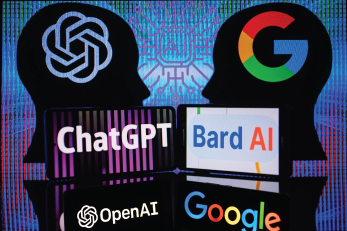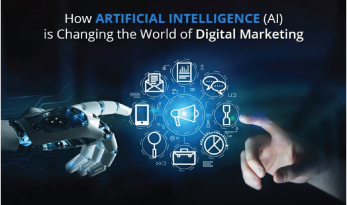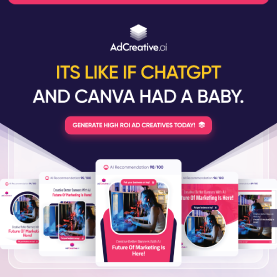AI-Powered Predictive Analytics: The Game-Changer You Can’t Ignore
Let me tell you a story. A few years back, I launched an e-commerce store selling handmade leather goods. It was a passion project, but like any venture, I wanted it to thrive. I spent countless hours tweaking product descriptions, running social media ads, and praying for sales to spike. But here’s the thing—I was flying blind. I had no clue which products would resonate with my audience or when demand would surge. It felt like throwing spaghetti at the wall, hoping something would stick.
Then, I stumbled upon AI-powered predictive analytics. And let me tell you, it was like flipping on a light switch in a dark room. Suddenly, I wasn’t just guessing anymore. The data started telling me stories—which products were likely to trend next month, what times of year customers were most engaged, and even which demographics were most likely to convert.
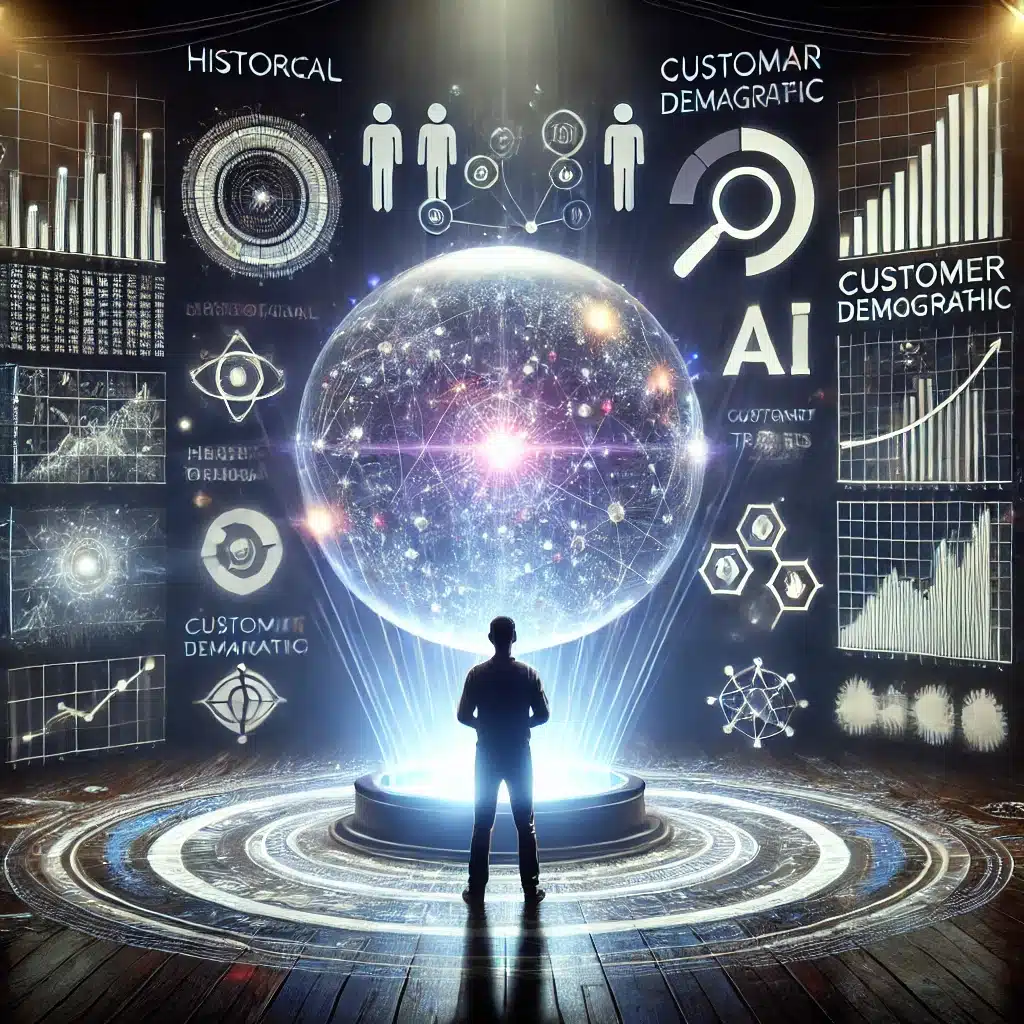
Predictive analytics isn’t just some fancy term tossed around in tech circles. It’s a real-deal tool that uses historical data and machine learning algorithms to forecast future outcomes. Think of it as having a crystal ball, but one grounded in data and logic. It helps you anticipate customer needs before they even know what they want.
For example, I noticed that my leather journals were consistently seeing a spike in sales around back-to-school season. With AI crunching the numbers, I realized this wasn’t just a fluke—there was a pattern. So, the next year, I doubled down on marketing those journals in late summer, and boom—sales skyrocketed.
The beauty of AI in marketing analytics is its ability to uncover these hidden patterns and trends. It can analyze customer behavior, purchase history, and even social media interactions to predict what’s coming next. This means you can allocate your marketing budget more effectively, targeting the right audience at the right time with the right message.
But here’s the kicker—it’s not just about sales. Predictive analytics also helps in optimizing inventory, reducing churn rates, and enhancing customer satisfaction. Imagine knowing which products to stock up on before the holiday rush or identifying at-risk customers before they slip away. That’s the power of AI-driven insights.
So, if you’re still relying on gut feelings and guesswork, it’s time to level up. Embrace AI-powered predictive analytics and let data drive your decisions. Trust me, your future self—and your bottom line—will thank you.
Let’s be real—marketing analytics used to be a slog. I remember spending hours hunched over Excel sheets, manually crunching numbers, trying to make sense of what was working and what wasn’t. And the worst part? By the time I finished, the data was already outdated. Sound familiar? That’s where AI swoops in like a superhero with a jetpack.

AI in marketing analytics isn’t just a fancy buzzword; it’s a game-changer. Imagine having a tool that doesn’t just collect data but understands it. We’re talking about algorithms that can sift through mountains of information in seconds, pinpoint patterns you didn’t even know existed, and serve up actionable insights on a silver platter. I once launched a campaign based purely on gut instinct—big mistake. The results? Let’s just say my conversion rates were more like diversion rates. But after integrating AI-driven tools, I could see exactly which channels were delivering ROI, which demographics were biting, and even what time of day my audience was most active.
One of the biggest perks? Speed and accuracy. AI doesn’t get tired, doesn’t need coffee breaks, and definitely doesn’t make those “oops, forgot to carry the one” mistakes. It’s like having a data scientist working 24/7, minus the hefty salary. But it’s not just about churning numbers faster; it’s about turning those numbers into a roadmap for your marketing strategy. AI can predict trends before they become obvious, helping you stay ahead of the curve. Trust me, there’s nothing sweeter than being the first to tap into a trend while your competitors are still scratching their heads.
Now, let’s talk about scalability. When my business started growing, the data grew with it—and fast. Traditional methods just couldn’t keep up. I mean, how do you manually track thousands of customer interactions across multiple platforms without losing your mind? AI handles that effortlessly. It adapts to complex customer journeys, making sense of the chaos and providing clear, actionable steps. Whether you’re dealing with a hundred data points or a million, AI scales with you.

But here’s the kicker—traditional methods simply can’t match this level of efficiency. They’re slow, clunky, and often miss the nuances that AI picks up on. In today’s world, consumers expect personalized experiences. They don’t want generic ads; they want content that speaks directly to them. Without AI, meeting those expectations is like trying to hit a bullseye in the dark.
So, if you’re still relying solely on old-school analytics, it’s time to rethink your strategy. AI isn’t just the future of marketing analytics—it’s the now. Embrace it, and watch your digital empire thrive.
Key AI Trends Shaping Marketing Analytics
Predictive Analytics
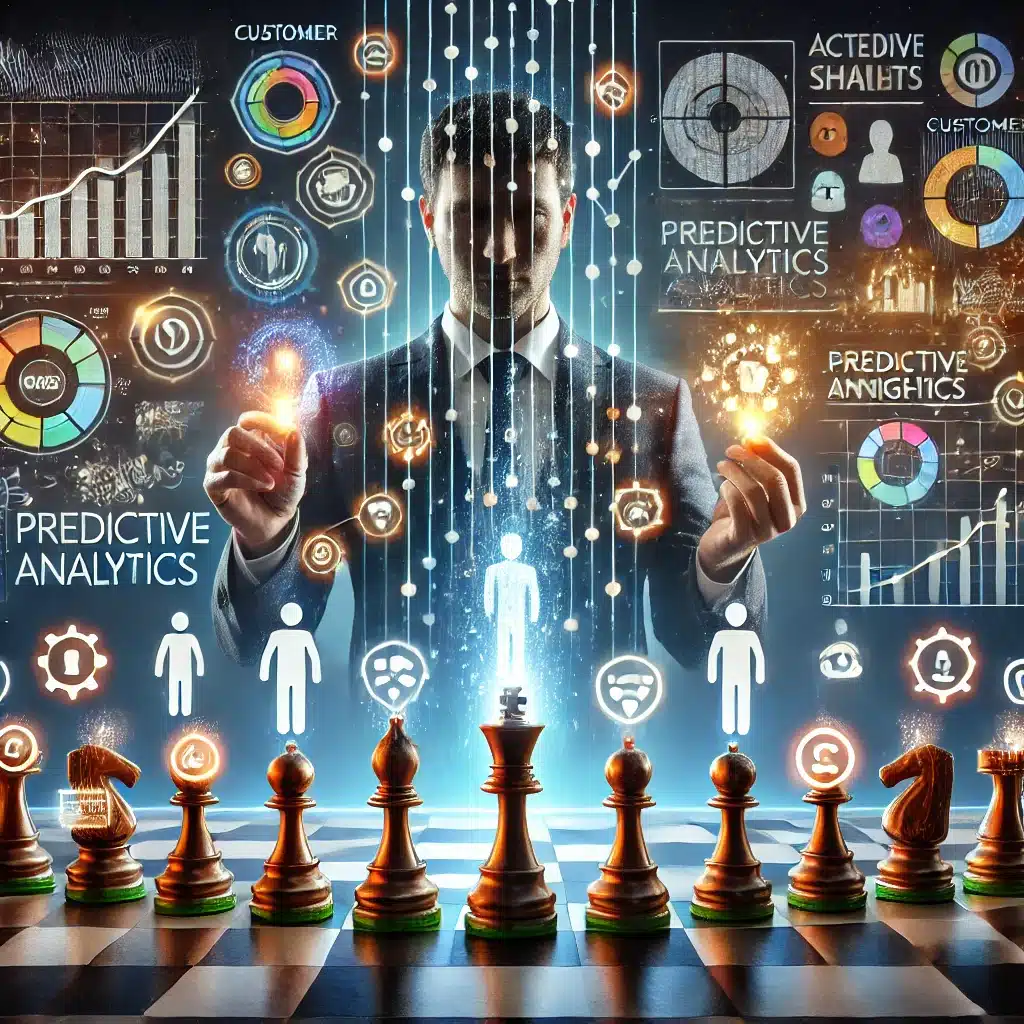
Let me tell you, when I first stumbled upon predictive analytics, it felt like discovering a secret weapon. Imagine being able to predict your customer’s next move like you’re playing chess—except you’ve got a cheat sheet. That’s what predictive analytics brings to the table. It’s not just data crunching; it’s turning raw numbers into actionable insights that can drive your business forward.
I remember this one time early in my journey when I launched a new product line. I was guessing—straight-up gut feeling—when it came to inventory and ad spend. And guess what? I ended up with a garage full of unsold products and a marketing budget that vanished faster than a cold soda on a hot day. That’s when I knew there had to be a smarter way.
Enter predictive analytics. It uses AI algorithms to forecast future behaviors based on historical data. Sounds fancy, right? But here’s the kicker—it works. Whether it’s ad targeting, product recommendations, or inventory planning, predictive analytics can be your business’s best friend.
Ad Targeting:
Ever thrown money at ads and hoped they stick? Yeah, me too. But predictive analytics identifies which customers are most likely to convert, so you’re not just casting a wide net and praying for results. I started seeing higher engagement and conversions because my ads were hitting the right people at the right time.
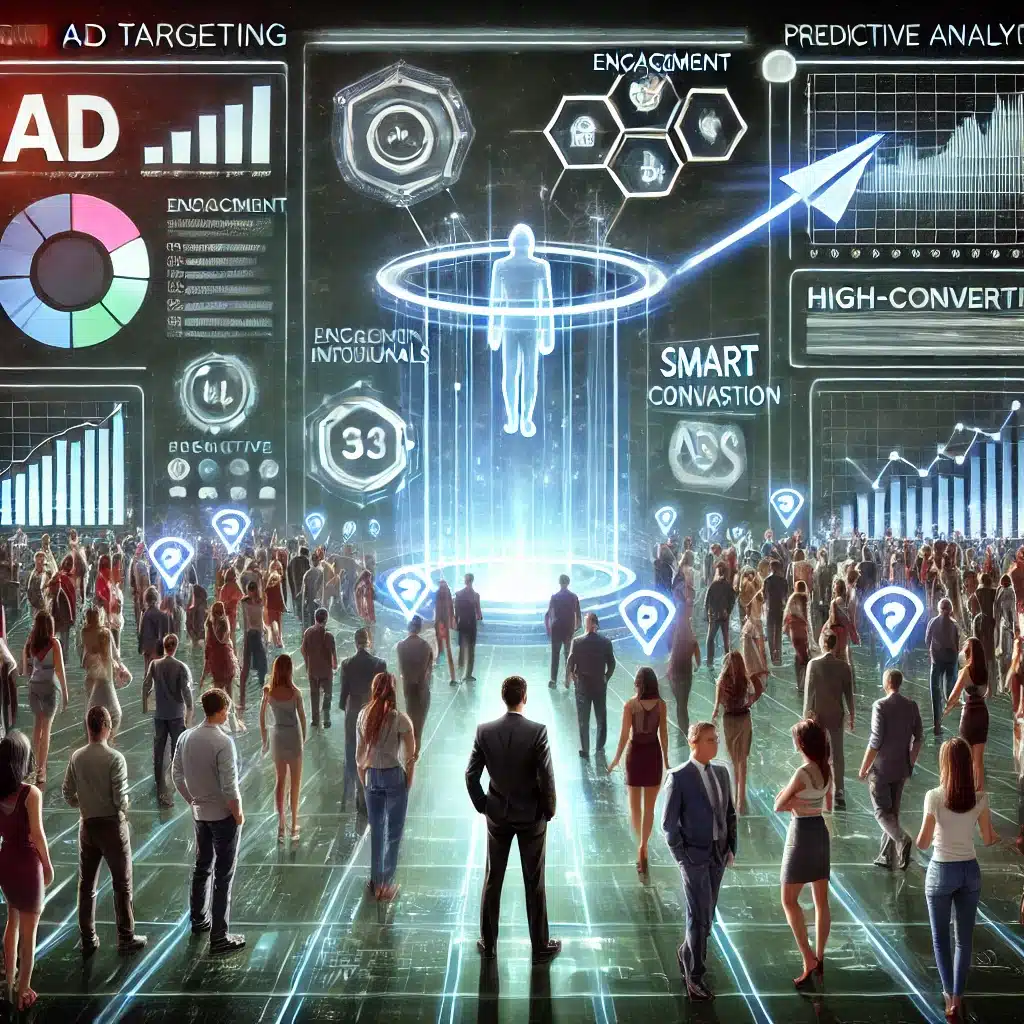
Product Recommendations:
Think about the last time you shopped online and the site recommended something you didn’t even know you wanted—but you bought it anyway. That’s predictive analytics at work. Tailoring suggestions to individual shoppers makes your brand feel personal, like you really get your customers.

Inventory Planning:
Here’s where I really saw the magic. Using predictive analytics, I could anticipate demand spikes and avoid stockouts. No more guessing games. A leading e-commerce brand I followed used this to forecast seasonal trends and increased their sales by 25% while cutting overstock costs. That’s not just a win—that’s a game-changer.
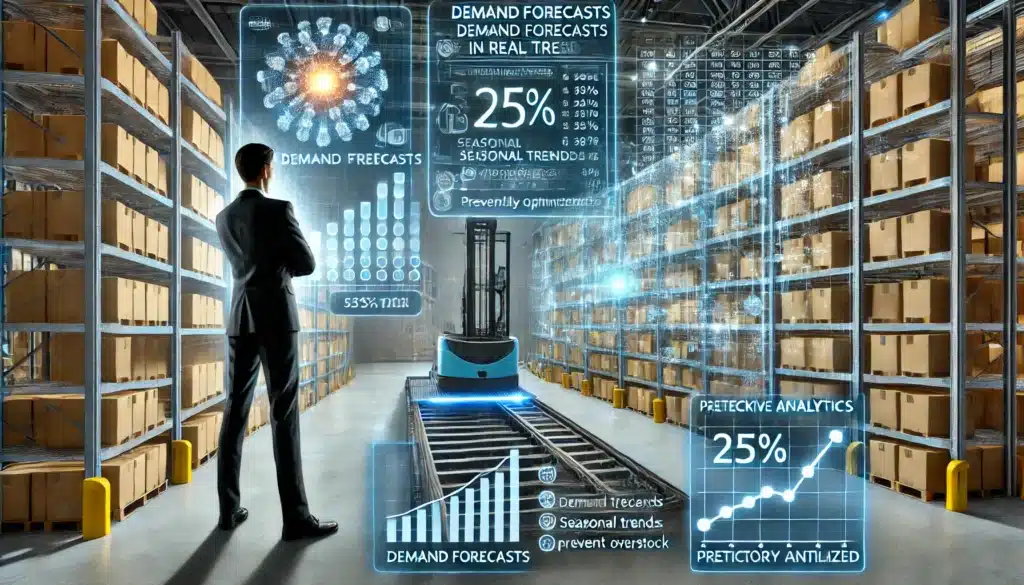
If you’re not tapping into predictive analytics yet, you’re leaving money on the table. It’s like having a crystal ball for your business, minus the hocus pocus. Trust me, once you see how data can guide your decisions, you’ll wonder how you ever ran things without it.Let me tell you about the time I blew half my ad budget on a campaign that tanked… in real-time. Yep, you read that right. Back when I was just starting out, I set up what I thought was a killer Facebook ad campaign. The targeting was on point, the creatives were sharp, and the copy? Chef’s kiss. I was confident—until I wasn’t.
Within hours, I could see the clicks coming in, but conversions? Nada. In the old days, I might’ve waited days, even weeks, to get a report and figure out what went wrong. But thanks to real-time analytics, I didn’t have to sit on my hands watching money go down the drain.
Here’s the kicker: because I was monitoring everything live, I noticed a pattern. People were clicking through, but they were bouncing off my landing page faster than you can say “SEO optimization.” I dug in, made some tweaks to the landing page—simplified the call-to-action, adjusted the headline, and boom, conversions started rolling in.
This, my friends, is the magic of real-time analytics. It’s like having a superpower for your campaigns. You’re not just throwing darts in the dark and hoping something sticks. You’re watching, learning, and adjusting on the fly.

One of the biggest game-changers for me was dynamically adjusting ad spend based on live consumer behavior. Let’s say you notice one of your ads is performing better in a specific region—instead of waiting for a report to tell you that weeks later, you can pump more budget into that region instantly. It’s all about being agile.
And don’t even get me started on personalized offers. Imagine someone’s browsing your site, lingering on a product page. With real-time insights, you can trigger a personalized discount or offer right then and there. It’s like having a conversation with your customer in real-time, meeting them exactly where they are in their journey.
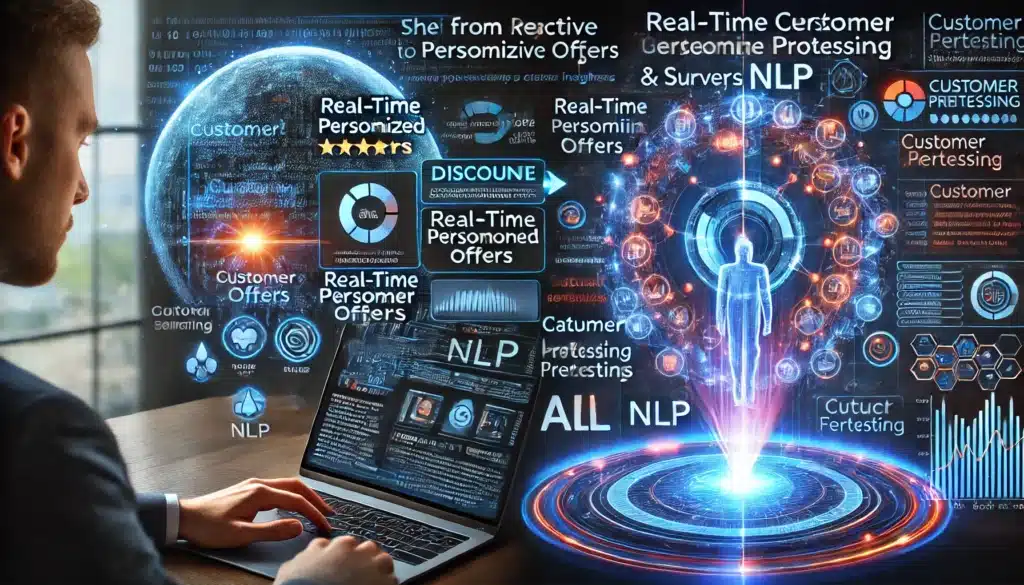
The key takeaway? Real-time analytics isn’t just a nice-to-have—it’s essential. It turns your marketing from reactive to proactive, letting you steer the ship with precision instead of riding the waves aimlessly. Trust me, once you harness it, you’ll never go back to the old way of doing things.Let’s talk about Natural Language Processing (NLP), and how it’s become a game-changer for understanding your audience. If you’re building your digital empire, you can’t afford to ignore the treasure trove of data sitting in plain sight—your customer feedback. We’re talking reviews, social media posts, surveys… all that raw, unstructured text that holds the key to what your audience really thinks.
I remember when I first dipped my toes into analyzing customer feedback. I was launching a new product line, convinced I knew exactly what my audience wanted. But sales were sluggish, and I couldn’t figure out why. That’s when I stumbled upon sentiment analysis—a feature of NLP that gauges public perception in real time. I plugged in some data from our customer reviews, expecting minor tweaks. Instead, I discovered a recurring complaint about the product’s packaging being difficult to open. It was such a small thing, but it mattered. We adjusted, and sales spiked.
Here’s the thing: we’re often too close to our own brands to see the blind spots. NLP helps you step back and view your business through the lens of your customers. Sentiment analysis isn’t just about tallying up positive vs. negative comments. It’s about understanding why people feel the way they do. Are they frustrated with shipping times? Are they thrilled with your customer service? This insight lets you double down on what works and fix what doesn’t—fast.
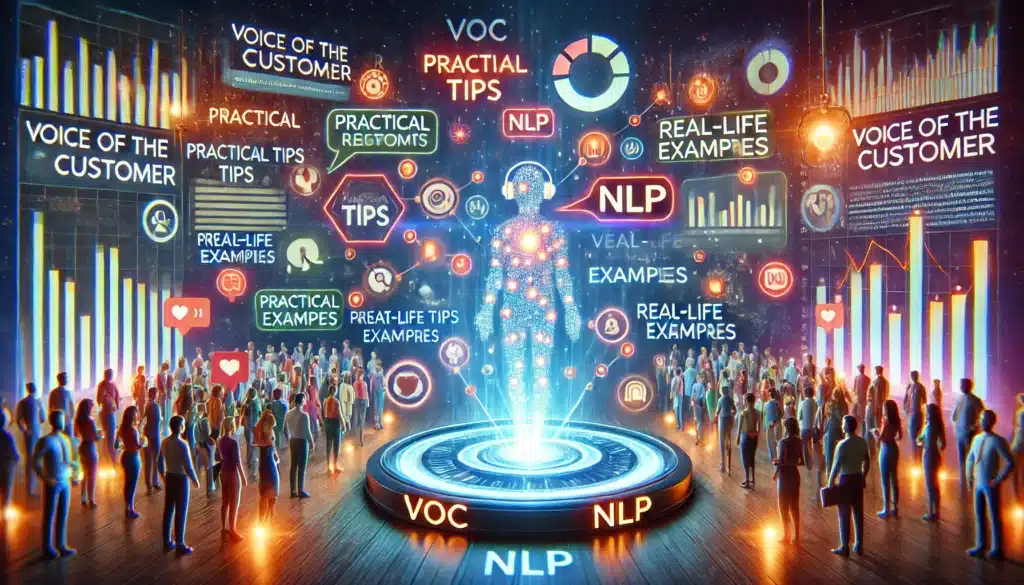
Then there’s the Voice of the Customer (VoC) analysis—another powerful NLP tool. Think of it as having a direct line to your audience’s collective brain. When I rolled out a new content strategy for one of my blogs, I used VoC to sift through thousands of reader comments and survey responses. Patterns started to emerge. Readers loved the practical tips but wanted more real-life examples. So, I tweaked the content to include more case studies and personal stories. Engagement went through the roof.
If you’re serious about scaling your digital venture, you need to embrace these tools. Sure, it might seem a bit technical at first, but trust me—the payoff is worth it. You’re not just guessing anymore; you’re making data-driven decisions that move the needle. And in the fast-paced world of digital entrepreneurship, that’s the edge you need to stay ahead.AI-Powered Attribution Models
Let me tell you, figuring out which marketing moves actually drive conversions used to feel like trying to solve a puzzle with half the pieces missing. You’d throw money at different channels—Google Ads, Facebook, email campaigns—and hope something sticks. But here’s the kicker: without knowing exactly what’s working, you’re basically flying blind. That’s where AI-powered attribution models come in and change the game entirely.

I remember when I was running one of my first e-commerce ventures. I was pouring cash into ads like it was going out of style, convinced that if I just “kept the pipeline full,” the sales would follow. But when the dust settled at the end of the month, my ROI was all over the place. It felt like I was winning the battle but losing the war. Sound familiar?
That’s when I stumbled onto multi-touch attribution powered by AI. Unlike the old-school single-touch models that only give credit to the first or last click, AI looks at the entire customer journey. It connects the dots between all those touchpoints—from that first Instagram scroll to the follow-up email they almost ignored. And suddenly, I wasn’t guessing anymore.
One practical lesson? AI showed me that while my Facebook ads were great for grabbing attention, it was actually my email sequences that closed the deal. So instead of blowing my budget on social ads, I shifted more resources into optimizing my email funnels. The result? A 30% boost in conversions within just a few weeks. Not bad for a simple tweak, right?
But here’s the real magic—AI doesn’t just spit out data; it gives you insights that actually make sense. It’ll tell you which campaigns are performing, how each channel contributes to the final sale, and where you should double down. It’s like having a marketing GPS, guiding you to the strategies that actually work.
The best part? This level of clarity transforms how you allocate your budget. You’re not just “spending” on marketing anymore—you’re investing with purpose. And trust me, when you see those improved ROI numbers roll in, you’ll wonder how you ever did it without AI.

So, if you’re still trying to guess which of your marketing efforts are moving the needle, it’s time to let AI handle the heavy lifting. Because in today’s digital landscape, data-driven decisions aren’t just smart—they’re essential.Let me tell you, when I first dipped my toes into using visual and voice analytics for marketing, I had no idea the kind of doors it would open. I mean, sure, we’ve all heard the buzzwords—”AI,” “big data,” “machine learning”—but when you actually start applying this stuff to your strategy? That’s when the magic happens.
Let’s start with visual analytics.
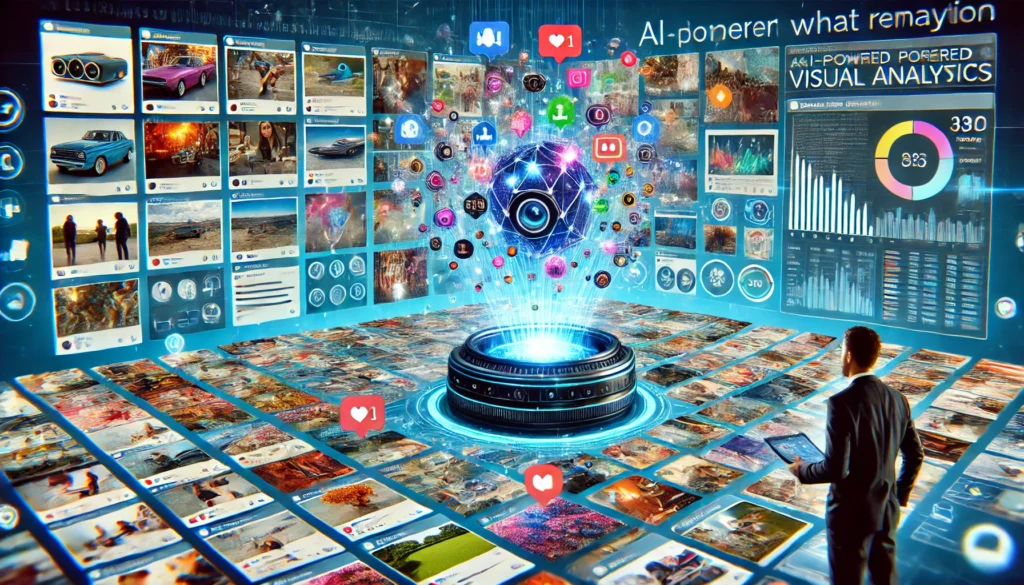
Picture this: you’ve got hundreds, maybe thousands, of customer photos floating around on social media, all featuring your product. Back in the day, we’d just be happy to see someone post about us, maybe repost it and call it a win. But now? AI-powered visual analytics can scan these images, pick up on patterns, and tell you what’s really resonating with your audience.
I remember launching a product line and assuming the sleek, minimalist design was the main attraction. Turns out, through visual analysis, we discovered that people were actually obsessed with the vibrant color options. It was all over their photos, their captions, their tags. This insight led us to shift our focus—more bold colors in marketing, more in our product lineup—and boom, sales spiked. Lesson learned: what you think people love isn’t always what’s making them click “Buy Now.”
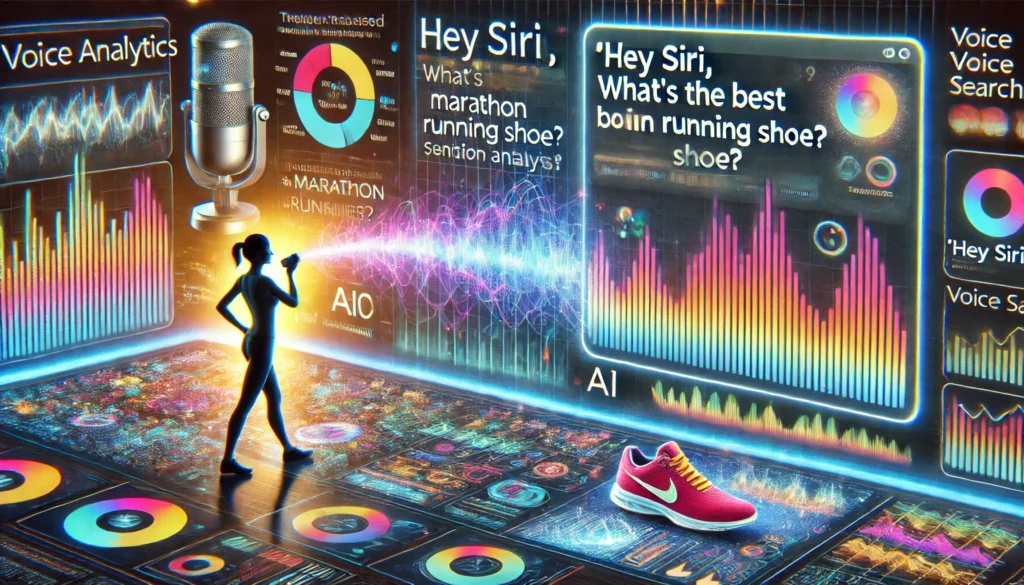
Now, voice analytics—that’s a game-changer in its own right. Voice search is exploding, and if you’re not optimizing for it, you’re leaving money on the table. I learned this the hard way. We were crushing it with text-based SEO but plateaued. Then it hit me—people aren’t typing “best running shoes for marathons” anymore. They’re saying, “Hey Siri, what’s the best marathon running shoe?”
By analyzing voice search trends, we revamped our content strategy to match conversational queries. It wasn’t just about sprinkling in keywords; it was about shifting the entire tone to sound more natural, more like how people actually talk. And guess what? Traffic shot up, engagement followed, and our brand felt more relatable, more in tune with our audience.
Both visual and voice analytics are like having a secret weapon. They’re not just tools; they’re windows into your audience’s world. The trick is to listen and adapt. Trust me, the data doesn’t lie, and when you lean into it, the results speak for themselves.
Let me tell you—embracing AI trends in marketing analytics has been a total game-changer for me. When I first dipped my toes into this world, I was stuck in spreadsheets, manually sifting through data like I was panning for gold. Spoiler alert: it wasn’t efficient, and it definitely wasn’t scalable. But once I started integrating AI tools into my workflow, everything shifted—and fast.
First off, the decision-making process became ridiculously sharper. AI doesn’t just spit out data; it gives you actionable insights. I remember running a campaign for one of my digital products and feeling pretty confident about my target audience… until the AI-powered analytics showed me otherwise. Turns out, a completely different demographic was engaging with my content—one I hadn’t even considered. Adjusting my strategy based on that insight doubled my conversions within a month. Without AI, I would’ve been flying blind, wasting time and ad spend.
Speaking of time, let’s talk efficiency. Automating repetitive tasks with AI saved me hours—and I mean hours every week. Tasks like segmenting audiences, generating reports, or even predicting trends used to eat up so much of my day. Now? AI handles that, freeing me up to focus on creative strategies and building genuine connections with my audience. It’s like having an extra team member who never sleeps and doesn’t need coffee breaks.
But the real kicker? The way AI has transformed the customer experience. Personalization is no longer a “nice-to-have”; it’s expected. AI helps me deliver hyper-personalized content that resonates with each individual user. I remember implementing an AI-driven recommendation engine for my e-commerce site. The result? Not only did it boost sales, but customer loyalty shot through the roof. People felt seen and understood, and that’s priceless in today’s crowded digital landscape.
Now, I won’t pretend it’s all sunshine and rainbows. There was definitely a learning curve. I fumbled with new tools, misread data a few times, and even felt overwhelmed by the sheer volume of insights. But here’s the thing—every stumble was a step forward. The more I leaned into AI, the more I realized its potential to revolutionize my marketing strategies.
So, if you’re still on the fence about adopting AI in your marketing analytics, let me be the nudge you need. Dive in, embrace the learning curve, and watch as it transforms not just your data, but your entire approach to marketing. Trust me, it’s worth it.
Let me tell you, diving into AI for marketing analytics isn’t just flipping a switch and watching the magic happen. I learned that the hard way. It’s a game-changer, sure, but it comes with its fair share of headaches.
First off, ethical concerns. You wouldn’t believe how messy things can get if you’re not careful with data. Early on, I was so excited about the insights AI was spitting out that I didn’t think twice about how that data was being collected. Big mistake. Transparency isn’t just a buzzword—it’s critical. You need to be upfront about what data you’re gathering and how you’re using it. And trust me, nothing tanks your credibility faster than running afoul of GDPR or CCPA. I had to scramble to get compliant, which was a nightmare I wouldn’t wish on anyone. Lesson learned: always prioritize ethical data practices from day one.
Then there’s the human side—overcoming resistance. I remember pitching AI tools to my team for the first time. You’d think I was suggesting we replace everyone with robots. The fear of job displacement was real. But here’s the thing: AI isn’t here to steal jobs; it’s here to make our work smarter and more efficient. I had to roll up my sleeves and show them firsthand how AI could handle the grunt work, freeing them up to focus on strategy and creative tasks. It wasn’t overnight, but eventually, they saw AI as an ally, not a threat.
Integration, though—that was the real beast. Migrating from old-school systems to shiny AI-powered platforms sounds great in theory, but in practice? Total chaos at first. Our legacy systems were like stubborn old dogs that didn’t want to learn new tricks. And the skill gaps? Huge. We had to invest heavily in training, and even then, some folks just couldn’t keep up. We ended up hiring a couple of AI experts, which wasn’t cheap, but it was necessary. Looking back, I wish we’d tackled the training earlier in the process to smooth out the transition.
Bottom line: adopting AI in marketing analytics isn’t a walk in the park. But if you’re prepared for the bumps—and trust me, there will be bumps—the payoff is worth it. Just keep your ethics tight, support your team through the change, and don’t underestimate the complexity of integration. It’s a wild ride, but one that can seriously level up your marketing game.
How to Prepare for the Future of AI in Marketing Analytics
Alright, let’s get real for a second—AI isn’t just some futuristic buzzword anymore. It’s here, it’s powerful, and if you’re not riding this wave, you’re probably getting left behind. I learned this the hard way when I ignored AI tools early on, thinking they were just another trend. Spoiler alert: they weren’t. My competitors? They were leveraging AI for customer segmentation and predictive analytics while I was still manually crunching numbers in Excel. Ouch.
Invest in Training and Education
Let’s start with the basics—knowledge is power. If your marketing team isn’t up to speed on how to use AI tools, you’re missing out on serious potential. I remember when I first introduced AI-driven analytics to my team. It was like giving a Ferrari to someone who only knew how to ride a bike. They were overwhelmed. So, we took a step back and invested in proper training—online courses, webinars, even bringing in an AI consultant for a few sessions. It wasn’t cheap, but the ROI? Through the roof. Now, my team can interpret complex data sets and glean insights that would’ve taken weeks manually.
Adopt Scalable Solutions
Here’s the thing—not all AI tools are created equal. I learned this after signing up for a flashy AI platform that promised the world but couldn’t integrate with our existing CRM. Total disaster. What you need are scalable solutions that grow with your business. Think of it like planting a tree—you want roots that can spread as the tree gets bigger. Look for AI platforms that offer flexibility, seamless integration, and can handle increasing data loads as your business expands. Trust me, future-you will thank you.
Stay Updated
AI evolves fast. Blink, and you might miss a major update that could revolutionize your marketing strategy. I make it a point to stay plugged into the latest AI trends—subscribing to industry newsletters, attending webinars, and even joining online forums. It’s like being part of a secret club where everyone’s sharing the next big thing before it goes mainstream. Keeping your finger on the pulse of AI advancements ensures you’re not just keeping up, but staying ahead.
In the end, preparing for AI in marketing analytics isn’t just about tools and tech—it’s about mindset. Be adaptable, stay curious, and never stop learning. That’s how you’ll thrive in this AI-driven landscape.
Let me tell you, the first time I dipped my toes into AI-driven marketing analytics, I felt like I was suddenly playing in the big leagues. It’s wild how quickly the landscape shifts when you let algorithms do the heavy lifting. I remember launching a campaign that, on paper, looked solid—strong copy, great visuals, and a decent budget. But the results? Meh. Engagement was flat, conversions were trickling in, and I was left scratching my head.
That’s when I decided to lean into AI tools. I started small, experimenting with predictive analytics to understand customer behavior better. The difference was night and day. Suddenly, I wasn’t guessing what my audience wanted—I knew. The data was telling me exactly when to post, which segments to target, and even what kind of language resonated most. It felt like having a secret weapon.
But here’s the kicker—AI isn’t just about crunching numbers. It’s about unlocking creativity. Once I trusted the data, I had more time and mental space to focus on crafting content that genuinely connected with people. I wasn’t bogged down by manual analysis, and that freedom led to some of my most authentic, engaging work.
One of the biggest lessons I learned? Don’t be afraid to iterate. AI tools are powerful, but they’re not infallible. I had campaigns where the AI recommendations flopped, and that’s okay. The key is to treat every result—good or bad—as feedback. Tweak, adjust, and keep moving forward.
Another game-changer was embracing personalization at scale. AI made it possible to deliver tailored experiences to thousands of people without breaking a sweat. I saw my email open rates skyrocket just by letting AI optimize subject lines and send times. It’s these little tweaks that compound over time, driving massive growth.
And let’s not forget efficiency. Before AI, I’d spend hours sifting through data, trying to spot trends. Now? I get actionable insights in minutes, freeing me up to focus on strategy and creative execution. It’s like having a supercharged marketing team working around the clock.
The future of marketing analytics lies in the hands of AI. Businesses that embrace these transformative trends will gain a competitive edge through smarter decision-making, enhanced personalization, and greater efficiency. As AI continues to evolve, it promises to unlock new opportunities for marketers willing to adapt. The time to start leveraging AI tools is now – those who wait risk being left behind in a rapidly changing landscape.
Explore the latest AI-driven marketing analytics tools and strategies to transform your campaigns and future-proof your business today!
